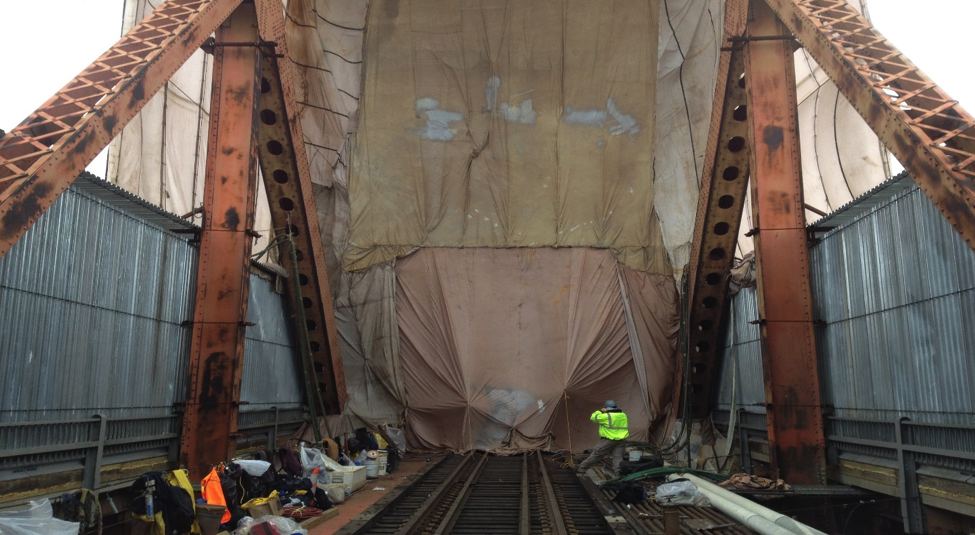 Kevin is serving as the Principal for KGC where he oversees all aspects of business and technical operations. For the past twenty-one years he has provided senior oversight and management of KGC’s most complex industrial hygiene and hazardous waste management projects. Kevin holds a Master of Science in Public Health (Specialty: Industrial Hygiene) from the Tulane School of Public Health and Tropical Medicine and is currently pursuing his Doctorate in Public Health (Specialty: Occupational Health) from the University of South Florida. He is a Certified Industrial Hygienist (CIH) and certified Project Management Professional (PMP)
Kevin is serving as the Principal for KGC where he oversees all aspects of business and technical operations. For the past twenty-one years he has provided senior oversight and management of KGC’s most complex industrial hygiene and hazardous waste management projects. Kevin holds a Master of Science in Public Health (Specialty: Industrial Hygiene) from the Tulane School of Public Health and Tropical Medicine and is currently pursuing his Doctorate in Public Health (Specialty: Occupational Health) from the University of South Florida. He is a Certified Industrial Hygienist (CIH) and certified Project Management Professional (PMP) Why Owners/Designers Should Not Specify Design Ventilation Flow Rates for Abrasive Blasting Containments
Abstract
We have all seen boilerplate project specifications over the years. Some standard specification provisions are still quite valuable after many years of use, but others have outlasted their usefulness. One recurring standard provision I see quite often that fits into this category is specifying a design ventilation flow rate for field industrial containment structures. There are potential risks associated with specifying design ventilation flow rates that outweigh the benefit of their inclusion in the project specification. There is a better way to achieve the desired result of protecting the workers, the public and the environment.
Background
In 1993, the OSHA Lead in Construction (29 CFR 1926.62) standard ushered in many fundamental changes to how industrial structures were rehabilitated.
In part, as a response to the above cited OSHA standard, the interim SSPC Guide 6, Guide for Containing Surface Preparation Debris Generated During Paint Removal Operations, established suggested minimum air flow rates within a containment system as a way for project designers and contractors to demonstrate the implementation of feasible engineering controls. SSPC turned to a well-established industrial hygiene publication from the American Conference of Governmental Industrial Hygienists (ACGIH) to address this issue: Industrial Ventilation, A Manual of Recommended Practice. It was a prudent first step.
As a result, the abrasive blasting and painting industry adopted the air flow of 60 feet per minute (fpm) down draft and 100 feet per minute (fpm) from the ACGIH publication because field practice at the time demonstrated this was a sound course of action. Years later, SSPC removed the suggested design air flow rates from the standard and placed the information in the notes section of SSPC Guide 6 , while still requiring minimum specified airflow rates be established for class 1A and 2A containment classifications.
Current Practice
Some departments of transportation and other owners continue to list design containment ventilation air flow rates (60 fpm down-draft and 100 fpm cross-draft) in their specifications. These flow rates are often established in specifications without consideration of the project specific parameters. SSPC Guide 6 gives an excellent explanation of what should be considered when designing an effective engineering control:
- Blasting pressure;
- Number and size of blast nozzles;
- Type, size and friability of abrasive;
- Flow rate of abrasive;
- The lead or toxic metal content;
- Thickness and age of the paint being removed;
- The type and size of the structure being prepared; and
- Configuration of the containment system being installed.
While 60 fpm to 100 fpm air flow rates may be effective velocities for many projects, these rates are not effective for all projects. A review of the literature, and my observations as a practicing Certified Industrial Hygienist, performing industrial hygiene air sampling and ventilation readings in field containments for over twenty years, indicate there is not a one-size-fits-all approach to addressing this issue. There is no silver bullet design air flow rate that will work in all cases—making the establishment of a specified design air flow rate problematic.
If there is no guarantee that the specified velocity will be effective in establishing a feasible control, why specify a design air flow rate? Moreover, how prudent is it to have a specified air flow rate, if the project-specific conditions have not been considered? Establishing a standard, design air flow rate feels arbitrary—though I know SSPC had good reason to move in that direction. I have heard a few explanations from some owners and project design consulting engineers why they continue to specify design air flow rates. To my surprise, their responses have not had anything to do with establishing feasible engineering controls.
Some consulting engineers argue that design air flow rates are intended to serve as a mechanism to decrease the size of an active abrasive blasting and painting containment for quality control reasons and for wind load considerations on bridges. On the face of it, these seem like reasonable explanations. However, these issues can be addressed by other means — without invoking design air flow rates.
Specifying a design air flow rate could end up costing the owner or their project designers money and expose them to unnecessary risk. After all, the burden of implementing a feasible engineering control is one the contractor should bear. Designing and implementing effective control methods appears to fall into the contractor’s means and methods category.
Potential Negative Consequence
What if a contractor had instituted adequate control methods, employee exposures were acceptable, visible emissions and accumulations met the project requirements and biological monitoring indicated low blood lead levels, but the achieved specified design flow rate had not been met? Should a contractor’s failure to meet the design air flow be deemed a contract non-conformance? I was onceinvolved on a project where this scenario played out. The owner insisted the contractor meet the contract design air flow rate—even though their control methods were working as intended.
The project did not conclude on a happy note. In the end, the disagreement in the interpretation of the design air flow rate cost both sides a lot of money.
Potential Negative Consequence
Suppose a contractor’s employee is (lead) poisoned. The Contractor followed the Owner specified ventilation flow rate within containment while using proper PPE and all other recommended controls methods. A smart plaintiff’s attorney could make the case that the contractor performed his work within OSHA requirements and designed its containment in accordance with the prescribed air flow rates found in the project specification.
The contractor could assert that they assumed the design flow rates were in the specification because they were sufficient to protect the contractor’s employees from over-exposure to lead. It is not unreasonable to believe this is a possible outcome. One argument made against this scenario is that the design flow rates are intended to be “minimums.” Yet, I have rarely seen the term “minimum” appear in a specification in terms of a design flow rate. Moreover, from the contractor’s perspective, does the word “minimum” not imply the specified air flow rate is the minimum necessary to achieve compliance? Regardless of one’s opinion on this argument, why muddy the waters when it is not necessary? These situations can be avoided by taking a different approach.
Solution
The ultimate goal is to protect the employees performing the work, the public and the environment from adverse impact. Instead of specifying design air flow rates, target velocities should be proposed in the contractor’s containment and ventilation design plan submittal. This plan should be developed by a professional engineer experienced in industrial ventilation systems who has considered the site-specific parameters of the project.
There are too many variables associated with specifying air flow rates within a containment structure for a project designer/owner to consider and quantify—especially when each contractor has their unique way of approaching the containment and ventilation system. It is not a sound course of action to default to a specified air flow rate without a compelling reason.
Measuring Operational Outcomes
The specifier should allow the contractor the opportunity to demonstrate that the contractor proposed air velocity inside containment will provide the necessary and desired controls. This can be accomplished by providing acceptance criteria in the project specification for the performance of the mechanical ventilation system in reducing worker exposures, controlling blood lead levels and controlling emissions. Approval of the containment and ventilation design should be contingent upon the successful implementation and verification in the field. I have seen this approach work on numerous large-scale hazardous paint removal projects with success.
Specification Considerations
Below are a several items to consider when writing a specification that addresses a field containment structure and ventilation system. This is not intended to be a complete list of things to consider.
- Require the contractor to retain a professional engineer to design and seal the containment and ventilation system.
- Require the professional engineer be qualified in industrial ventilation systems.
- Require the professional engineer visit the project site and confirm the containment and ventilation system has been installed in accordance with the designed and sealed containment and ventilation plan.
- Require the designed engineering controls reduce airborne exposures to levels as low as feasible.
- Require instrument verification of negative pressure.
- Require the contractor provide routine checks of the mechanical ventilation system in order to ensure effective and continued performance.
- Establish wind load requirements.
- If necessary, limit the size of a containment based on the project specific requirements—not on air flows.
Specifying industrial ventilation flow rates offers very little value to the owner and may result in unneeded project costs; in fact, it opens up the possibility of more issues rather than providing any solutions. If owners/designers want to limit the size of field containments, it should be done without invoking design air flow rates.
As seen on PaintSquare.com

